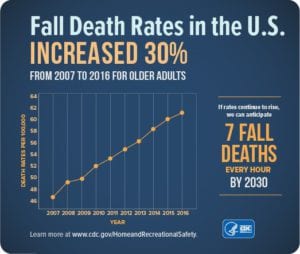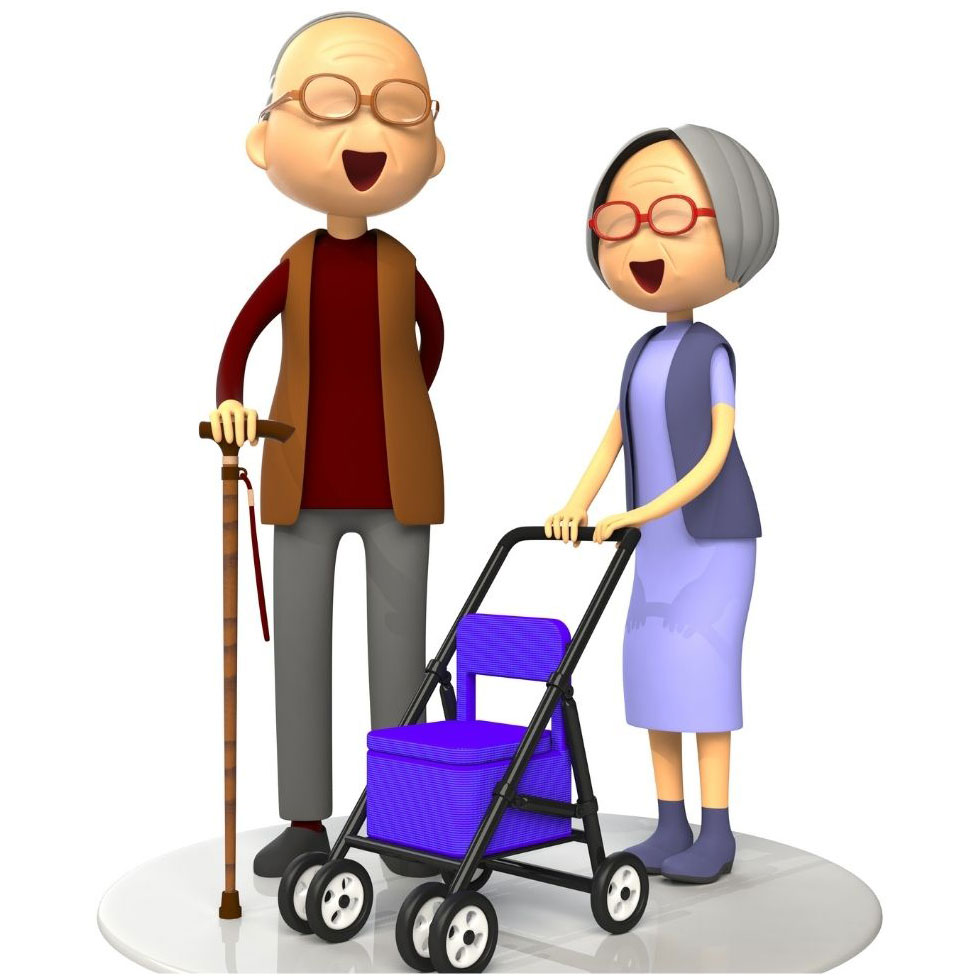Our Challenge
One in Four Seniors Falls Each Year.
This Is Totally Unacceptable.
When I read these statistics below about people over 65 years of age, I felt disturbed and sadden. I wanted to change it. I wanted to do whatever I can to reduce these horrible consequences as much as possible. There is no valid reason we cannot change this for seniors. And Yes I am one of those over 65.
According to the U.S. Centers for Disease Control and Prevention(CDC):
- One in four Americans aged 65+ falls each year.
- Every 11 seconds, an older adult is treated in the emergency room for a fall; every 19 minutes, an older adult dies from a fall.
- Falls are the leading cause of fatal injury and the most common cause of nonfatal trauma-related hospital admissions among older adults.
- Falls result in more than 2.8 million injuries treated in emergency departments annually, including over 800,000 hospitalizations and more than 27,000 deaths.
- In 2015, the total cost of fall injuries was $50 billion. Medicare and Medicaid shouldered 75% of these costs.
- The financial toll for older adult falls is expected to increase as the population ages and may reach $67.7 billion by 2020
These statistics are not getting any better. Considering that we will be living longer it will be getting worse.
CDC Falling Statistics
Important Facts about Falls
Each year, millions of older people—those 65 and older—fall. In fact, more than one out of four older people falls each year, 1 but less than half tell their doctor. 2 Falling once doubles your chances of falling again. 3

Falls Are Serious and Costly
- One out of five falls causes a serious injury such as broken bones or a head injury,4,5
- Each year, 3 million older people are treated in emergency departments for fall injuries.6
- Over 800,000 patients a year are hospitalized because of a fall injury, most often because of a head injury or hip fracture.6
- Each year at least 300,000 older people are hospitalized for hip fractures.7
- More than 95% of hip fractures are caused by falling,8 usually by falling sideways.9
- Falls are the most common cause of traumatic brain injuries (TBI).10
- In 2015, the total medical costs for falls totaled more than $50 billion.11 Medicare and Medicaid shouldered 75% of these costs.
What Can Happen After a Fall?
Many falls do not cause injuries. But one out of five falls does cause a serious injury such as a broken bone or a head injury.4,5 These injuries can make it hard for a person to get around, do everyday activities, or live on their own.
- Falls can cause broken bones, like wrist, arm, ankle, and hip fractures.
- Falls can cause head injuries. These can be very serious, especially if the person is taking certain medicines (like blood thinners). An older person who falls and hits their head should see their doctor right away to make sure they don’t have a brain injury.
- Many people who fall, even if they’re not injured, become afraid of falling. This fear may cause a person to cut down on their everyday activities. When a person is less active, they become weaker and this increases their chances of falling.12
What Conditions Make You More Likely to Fall?
Research has identified many conditions that contribute to falling. These are called risk factors. Many risk factors can be changed or modified to help prevent falls. They include:
- Lower body weakness
- Vitamin D deficiency (that is, not enough vitamin D in your system)
- Difficulties with walking and balance
- Use of medicines, such as tranquilizers, sedatives, or antidepressants. Even some over-the-counter medicines can affect balance and how steady you are on your feet.
- Vision problems
- Foot pain or poor footwear
- Home hazards or dangers such as
- broken or uneven steps, and
- throw rugs or clutter that can be tripped over.
Most falls are caused by a combination of risk factors. The more risk factors a person has, the greater their chances of falling.
Healthcare providers can help cut down a person’s risk by reducing the fall risk factors listed above.
